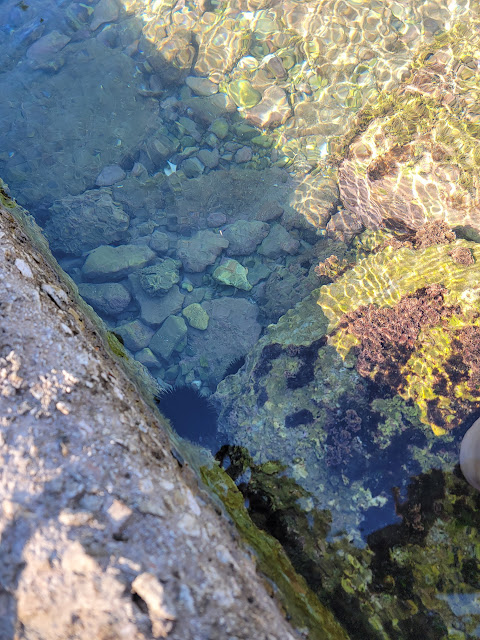Update From Nafplio Greece
 |
| Traditional fish soup of Nafplion |
I am lost in time! My update from Nafplio is late, and it's almost time to give you an update from Trikala, which is where we've been since almost a week ago. We chose to travel by foot or taxi on our stops and to use a transport service to take us from place to place. The drive from Nafplio to Trikala was going to be long (and expensive), but we chose to make it longer so that we could go through Patras and drive over the engineering marvel, the Rio Antirio bridge. The drive took all day with two pit stops and one lunch break by the Gulf of Corinth. More on all of that on the next post, and back to Nafplio.
 |
| One of the many alleys filled with shops and tavernas, |
The port town of Nafplio is a two- to three-hour drive from Athens, Sparta and Kalamata. We stayed at a lovely suite hotel with a small balcony overlooking one of the many squares and the beautiful rooftops of colorful Nafplio. Indeed, the entire town is colorful due to the influence of the Venetians. The colors of houses, window shutters, doors and more are pastels typical of Venice, Italy, Fiscardo, Kefalonia, and Charleston, South Carolina, in the United States.
Nafplio, the first capital of Greece, is surrounded by water, but there is no easy access to what we think of as a beach. Instead, you do as we did, and hire a taxi to take you about 20 minutes away to beautiful Tolo beach, where there are restaurants with umbrellas and chairs ready for you to rent while you enjoy the water. Waiters walk around taking food and drink orders, so you can spend the day feeling as if you're on a Greek island when you're not. Pretty good deal. There is a beach in Nafplio, but you have to be prepared to walk--really walk. Either you walk up a steep street and down lots of steps or you walk the harbor path (which is longer, but flat) and then down lots of steps. When you're through, you do everything again, but in the opposite direction.
The magical swimming pools of Nafplio were a late discovery. While I walked by them every morning, I didn't realize how shallow they are. On our last morning there, we had a peaceful and healing soak in the salt water that flowed into the pools. Up until around 11:30 in the morning, there are only a few people there. On this particular morning, I started out by soaking my legs in the water next to small fish swimming by and a sea urchin beside me! Eventually, the spiny black orb moved away to join a small colony nearby. This is one reason that you wear water shoes in the water here.
 |
| My friend the sea urchin. |
Over centuries, Nafplio has been an attractive location to many, having been ruled by the Venetians, then the Ottomans, then the Venetians again, then the Ottomans, until the Greek Revolution, when Nafplio became the first capital of a fully independent Greece. It's easy to see why the older buildings are architecturally diverse. For example, there are two mosques, and one of them was converted to the first parliament house of free Greece. A brief history can be found here. My favorite building is a small Greek Orthodox church, the Panagia. While there are many churches in Nafplio, the Panagia is small and old and comforting. I attended the Sunday liturgy, and was taken back to so many Sundays in Greek churches in Australia and in America. And there are two castles, one with 999 steps to climb for access, and two fortresses, one of which is in the harbor, sitting like a tiny island on the water all by itself.

















Comments
Post a Comment